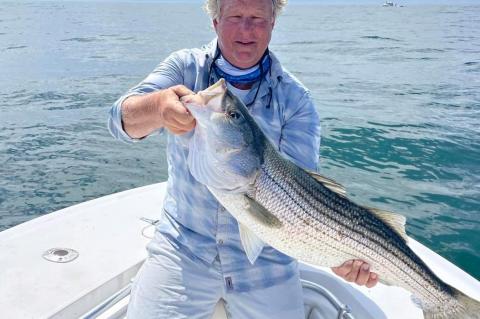“Lots of weakfish are around, plus there are porgies, blowfish, fluke, sea bass, snappers, kingfish, and even some black drum being caught,” reports Sebastian Gorgone of Mrs. Sam’s Tackle in East Hampton.
Fishing
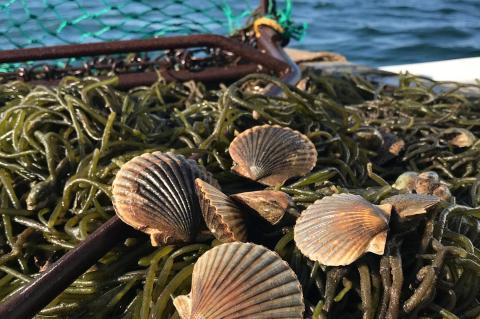 It’s Another Disappointing Year for Scallops
It’s Another Disappointing Year for ScallopsIt's news that neither a commercial bayman nor those who enjoy bay scallops wanted to hear: For the fourth summer in a row, there has been a significant die-off of mature bay scallops in local waters.
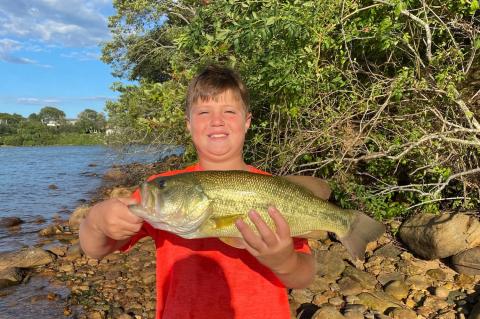 On the Water: A Downward Trend?
On the Water: A Downward Trend?For boat owners, the fact that diesel has dipped below $6 a gallon is welcome news, even if it's still expensive. As any owner of a power boat knows, fuel is just one part (actually a very small part) of the overall expense of the craft. Other expenditures like dockage, insurance, maintenance, and other factors, significantly overshadow the bill at the fuel dock.
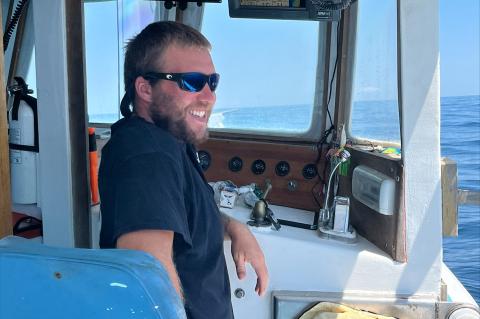 On the Water: A Simple Life
On the Water: A Simple LifeDespite the excessive-heat warning from the National Weather Service, our intended quarry was a species that’s more recognizably caught in the bone-chilling winds and cold of winter: the iconic codfish.
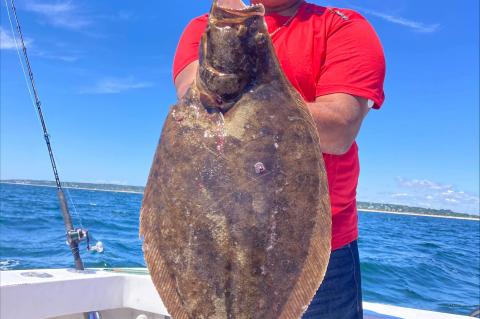 On the Water: Suddenly August
On the Water: Suddenly August“The fluke bite has really picked up over the past week or so,” Paul Apostolides said. “Nice fish up to 10 pounds have been taken.”
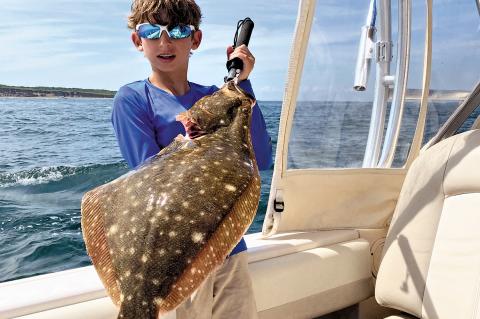 On the Water: The Banana Curse
On the Water: The Banana CurseFishermen can be a rather superstitious lot. Many have unusual habits or a routine that is indelibly ingrained based on past history — sometimes on fact but more likely fiction.
 The Day Baymen Defied the Law
The Day Baymen Defied the LawThirty years later, Patty Eames says it was “a day that’s right here at the front of my brain.” She was one of many locals and luminaries who were arrested at Indian Wells Beach in Amagansett on July 28, 1992, during a storied protest that found the East Hampton Baymen’s Association in open defiance of a 1990 state ban on haulseining for striped bass off the ocean beaches.
 On the Water: Off With the Old
On the Water: Off With the OldLobsters grow by molting. It's basically a process in which they struggle out of their old shells while simultaneously absorbing water which expands their body size. Marine scientists estimate that molting occurs about 25 times in the first five to seven years of a lobster's life. Once shedding their old shells, lobsters put on the feed bag in a big way.
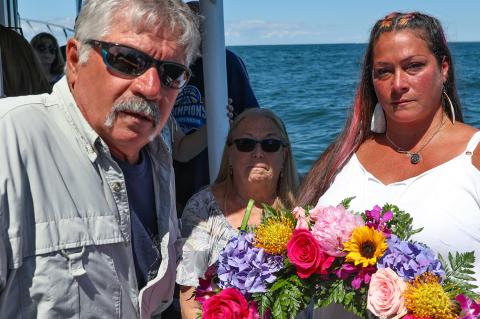 On the Water: Farewell to Serena
On the Water: Farewell to Serena Serena Vegessi Schick, who died last fall, touched many in Montauk who work on the water, having spent years in her youth and early adulthood, as well as the final few months of her life, working the deck of the Bones netting or filleting fish, untying tangles, or just patiently helping youngsters catch the first fish of their lives.
 On the Water: Bunker in Short Supply
On the Water: Bunker in Short SupplySo far this year, Mother Nature has served up a curveball, as bunker showed up on schedule but dispersed rather quickly to parts unknown.
 On the Water: Another Canceled Trip
On the Water: Another Canceled TripOnce again, the weather gods, despite sunny skies, spoiled our plans, as a gusty 30-knot breeze from the northwest would make fishing difficult and downright uncomfortable.
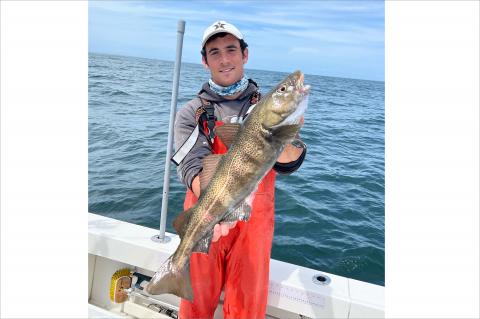 On the Water: An Age-Old Question
On the Water: An Age-Old QuestionOn the local fishing scene, the action has generally been good in many locales, and anglers of all ages have taken part.
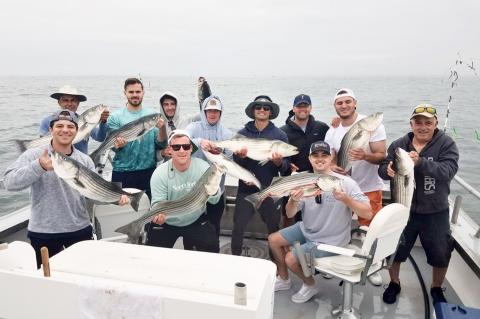 On the Water: Striped Bass Amass
On the Water: Striped Bass AmassWant to catch a striped bass? Then Montauk is clearly the place to be right now.
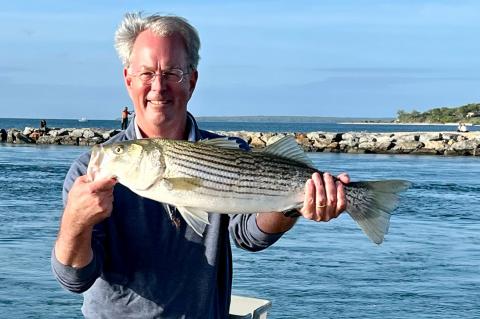 On the Water: Turbulence at the Gut
On the Water: Turbulence at the GutI decided to try a few quick drifts for striped bass in Plum Gut last week. The bass, according to reports, have been running in great quantities there.
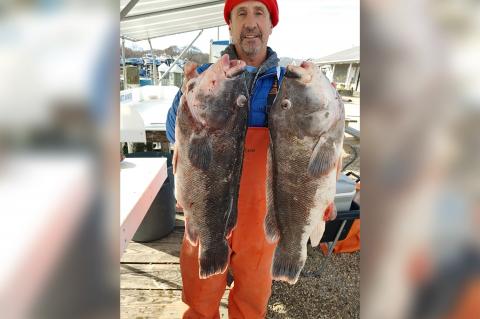 On the Water: Out on a High Note
On the Water: Out on a High NoteIn baseball parlance, the fishing season is now formally in the bottom of the ninth inning. There are two outs and two strikes on the batter at the plate, or in this case a fisherman with a rod and reel in hand. For my part, I did not want to strike out by not fishing one last time before the end of the year.
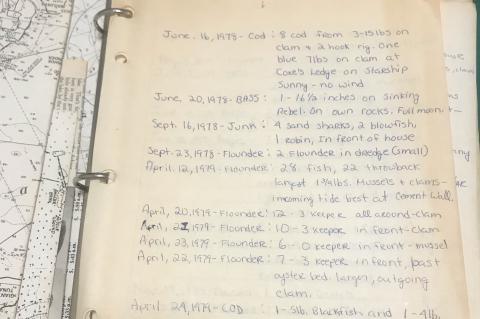 On the Water: Back to the Beginning
On the Water: Back to the BeginningThe other night, I came across my first fishing logbook, started back in 1978, in which I began to inscribe my saltwater exploits when I was 15 years old. Back then I considered it a chore to take time to make notations of success or failure in my fishing excursions and wondered how it would ultimately serve me. But now I finally know.
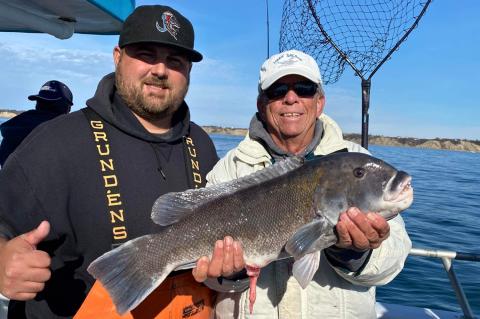 On the Water: Fishing on Other Boats
On the Water: Fishing on Other BoatsWith my boat prematurely out of the water for the season with various and costly engine issues, I have to find other vessels to fish on. Many friends have already hauled out their crafts, so I’m resigned to fishing on open boats, and that’s just fine with me. Two weeks ago, I took passage on the Peconic Star 3 out of Greenport for blackfish. It is skippered by the ever-youthful Capt. Speedy Hubert, he of the age of 84. Spry and energetic as ever, he anchored us up on a wreck off Horton’s Point in Long Island Sound. I had not fished that area in probably over 35 years. It was nice to be back.
 On the Water: Season Ends for Some
On the Water: Season Ends for SomeRick Pickering, the owner of Ship Ashore Marina in Sag Harbor, broke the bad news: “The turbocharger on the engine of your boat needs to be rebuilt, or we can get you a new one.”
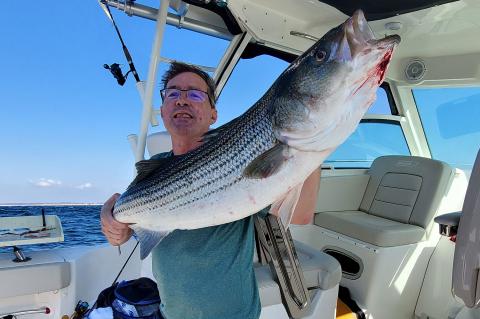 On the Water: Winds Abate, Fishing Great
On the Water: Winds Abate, Fishing GreatAfter a few weeks of incessant gusty winds, the weather gods who rule from the clouds high above finally provided anglers with a much-welcomed reprieve for several extended days of very fishable conditions, a rare occurrence by November marine weather standards.
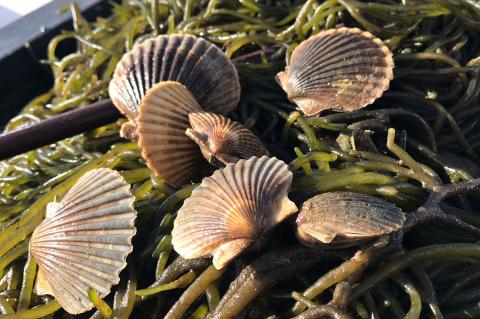 On the Water: Wishing for Scallops
On the Water: Wishing for ScallopsI was determined to find out for myself if the dire prediction of another terrible scallop season was in fact true.
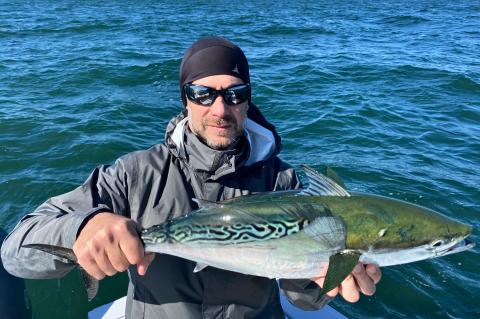 On the Water: Back in the Boat
On the Water: Back in the BoatSaturday’s marine forecast looked promising for a change. The bushel of green crabs that I bought two weeks ago would finally be put to good use for a few hours of blackfishing in and around the Plum Island area.
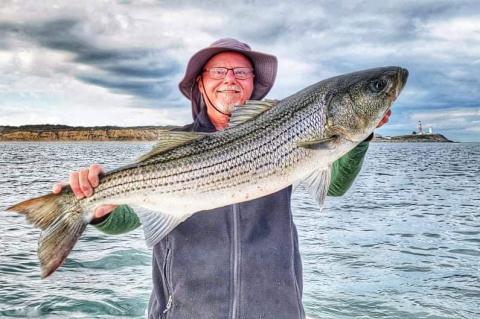 On the Water: Black Gold Found
On the Water: Black Gold FoundAs the gusty east winds finally abated last week after a four-day blow, the opening of blackfish season was eagerly welcomed by a multitude of anglers.
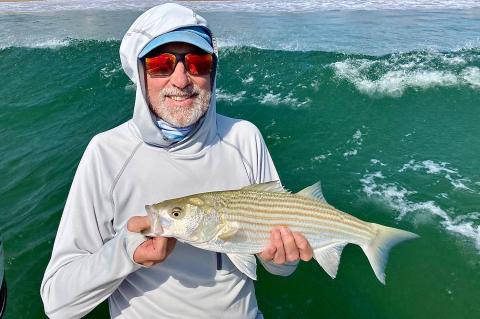 Winds Hinder Holiday Fishing
Winds Hinder Holiday FishingA three-day blow over the holiday weekend put a severe damper on things for those intent to wet a line.
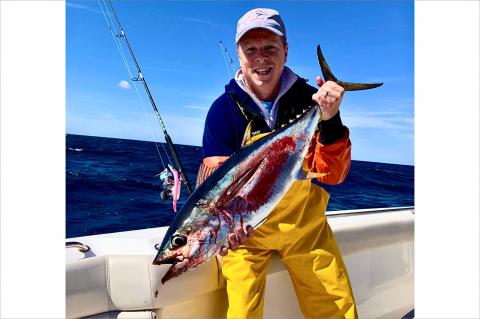 On the Water: Fishing Exploits on Hold
On the Water: Fishing Exploits on HoldSadly, I’ve not been fishing on my boat in well over a month, and my 30-foot Nova Scotia-built craft is high and dry on land while it receives a new stern deck.
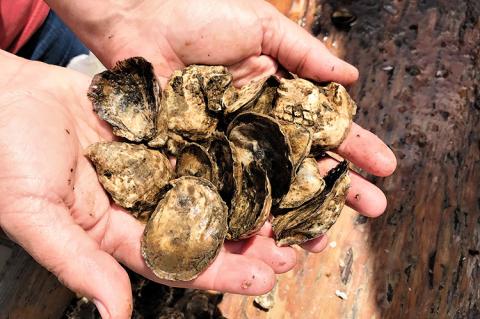 A Tale of Two Bivalves
A Tale of Two Bivalves“Oysters are incredibly hardy,” said Kim Tetrault, who oversees the Cornell Cooperative operations in Southold. “They can withstand a lot of what Mother Nature throws at them.”
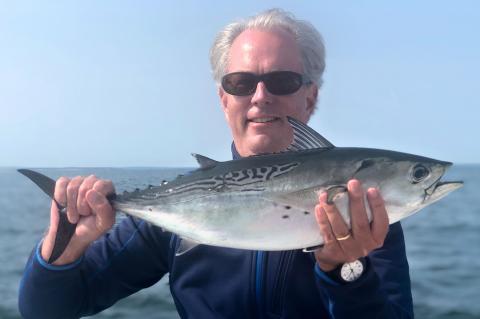 On the Water: A Hole You Throw Money Into
On the Water: A Hole You Throw Money IntoOwning a boat certainly has its ups and downs. Lately, it’s been more of the latter.
 On the Water: So Many Fish on the Menu
On the Water: So Many Fish on the MenuWe are getting close to August and it's clear that the fishing scene has shifted into full summer mode. The summer menu of fish includes everything from wahoo to swordfish, codfish to red hake, as well as dozens of other fish in between.
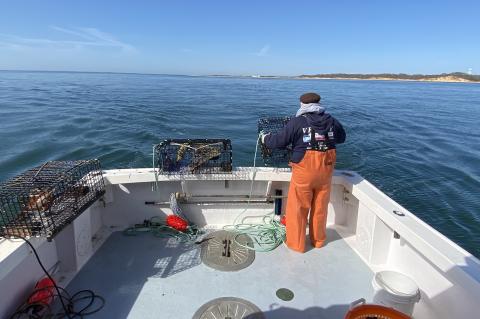 On the Water: Poached Lobster
On the Water: Poached LobsterLast week, I was mugged. Someone pulled my lobster traps, whatever lobsters they may have contained, and three dozen oysters I had placed in the traps and left the rope tangled in knots. "Some people really suck," said my companion, who helps me on deck.
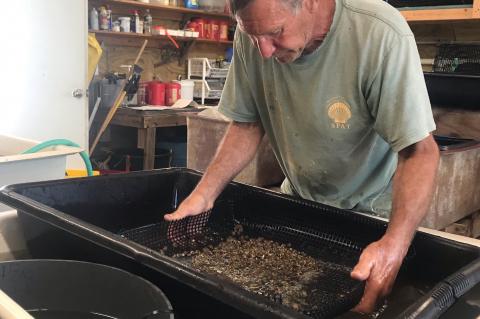 On the Water: The Oyster and Scallop Whisperer
On the Water: The Oyster and Scallop WhispererKim Tetrault, the longtime chief oyster guru at the Cornell Cooperative Extension Marine Center in Southold, tends oysters hatched in late March and scallops still too tiny to be seen without a microscope.
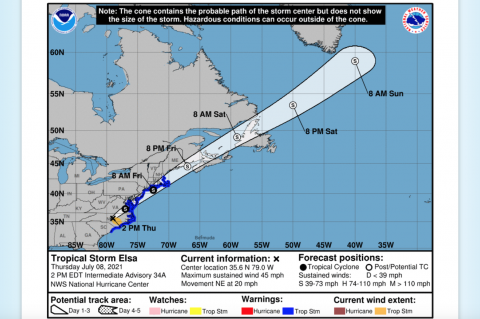 Tropical Storm Elsa Headed Our Way
Tropical Storm Elsa Headed Our WayThe South Fork is forecast to experience the worst of Tropical Storm Elsa’s gusty winds, heavy rain, tidal flooding, and rough surf between 6 a.m. and noon on Friday. Elsa, which made landfall in Florida on Wednesday, is expected to move through Mid-Atlantic states and into New England through Friday.

